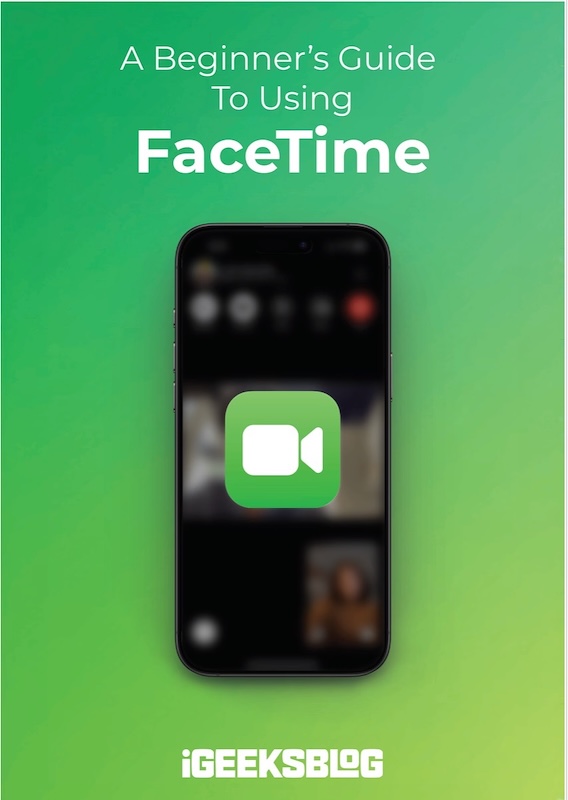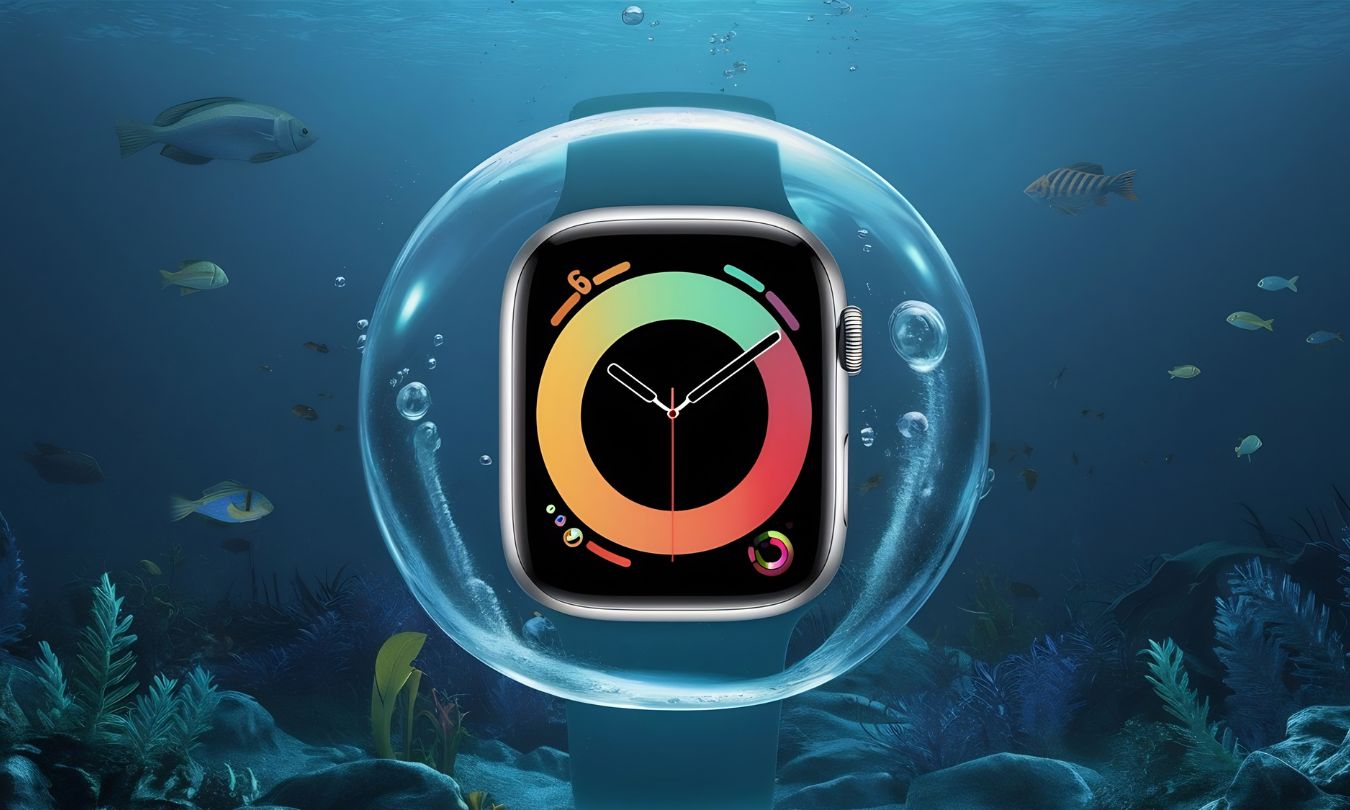
FaceTime Like a Pro
Get our exclusive Ultimate FaceTime Guide 📚 — absolutely FREE when you sign up for our newsletter below.

FaceTime Like a Pro
Get our exclusive Ultimate FaceTime Guide 📚 — absolutely FREE when you sign up for our newsletter below.
Wondering if your Apple Watch can swim? Get the quick facts on water resistance, safe activities, and care tips!
As your go-to fitness buddy, it makes perfect sense to want to use your Apple Watch for tracking workouts, swimming, or any water-related activities. This handy device is designed to help you track your progress, set fitness goals, and stay motivated during your exercise sessions.
But before you dive into the pool or head out for a run in the rain, you might be asking yourself: can your Apple Watch really handle water? Knowing the water resistance features of your Apple Watch is crucial to ensure you use it safely and make the most of its capabilities during all your activities.
It’s crucial to understand that while Apple Watches are water resistant, they aren’t completely waterproof.
Apple Watches are built to resist water up to certain limits, but if you push those limits, they can still get damaged.
Here’s a straightforward table that outlines the water resistance levels for each Apple Watch model:
| Apple Watch Model | Water Resistance Level | Standards/Certifications | Suitable For |
|---|---|---|---|
| Series 1 & 1st Generation | Splash resistant (IPX7) | IEC 60529 | Hand washing, rain |
| Series 2 and later (e.g., Series 11) | Up to 50 meters (WR50) | ISO 22810:2010 | Swimming in pool or shallow water |
| Ultra, Ultra 2, & Ultra 3 | Up to 100 meters (WR100) | ISO 22810:2010, EN13319 | Swimming, snorkeling, scuba diving up to 40m (130ft) |

Your Apple Watch is great for tackling many daily tasks, but it’s essential to remember that not all water activities are safe for it. Here’s a quick overview:
Not all Apple Watch bands are created equal in terms of water resistance. Many sports bands, such as those made from silicone or fluoroelastomer, are water-resistant and suitable for swimming. These materials are designed to withstand water exposure, making them ideal for activities such as swimming, showering, or exercising when your watch might get splashed.
On the flip side, bands made from leather, metal, or fabric aren’t water-resistant and can suffer damage from moisture. These materials can absorb water, tarnish, or wear down over time if they become wet, which can affect both their appearance and comfort.
Examples of non-water-resistant bands:
A band that isn’t water-resistant can take a hit when it gets wet—it might get damaged, feel uncomfortable, or even irritate your skin. So, if you’re planning to swim or know your watch will get splashed, it’s best to go for a sports band. Choosing the right band helps keep your Apple Watch in great shape and comfy to wear, no matter what you’re up to.
Apple doesn’t have a strict, one-size-fits-all rule about how long you can keep your watch submerged in water. That said, it’s generally a good idea to limit continuous exposure to about 30 minutes, especially if you’re swimming or engaging in water sports. Sticking to this guideline can help reduce the chances of water getting inside, particularly as your watch gets older and its seals start to wear down.
Prolonged exposure to water can gradually diminish your device’s water resistance, making it more vulnerable to damage over time. Keeping your water exposure short helps ensure that your Apple Watch remains reliable and functional for a more extended period. After swimming in salt or chlorinated water, be sure to rinse your watch with fresh water and dry it thoroughly to keep its protective features in top shape.
Just a heads up: while Apple doesn’t set a specific time limit for submersion, many experts suggest keeping water exposure under 30 minutes as a wise precaution to help maintain water resistance.
The Apple Watch Series 2 and newer models come with a handy Water Lock feature. When you start a water workout, it turns on automatically, or you can activate it manually from the Control Center. This feature locks your screen to keep it safe from any accidental taps caused by water droplets.
How to activate Water Lock manually:

When you finish your activity, turn the Digital Crown. This will unlock the screen and trigger the speaker to eject any water trapped inside.
To keep your Apple Watch as water-resistant as possible:
Myth: Apple Watches are waterproof.
Fact: No Apple Watch is completely waterproof; all are water-resistant to specific standards.
Myth: Water resistance lasts forever.
Fact: Water resistance diminishes over time with use and exposure.
Myth: All bands are safe for swimming.
Fact: Only certain bands (like sports bands) are water resistant.
Important:
Apple’s standard warranty does not cover water damage, even for water-resistant models. If your watch is damaged by water, Apple may not be able to repair or replace it under warranty. Always follow care guidelines to reduce risk.
If you suspect water damage:
Prompt action can minimize damage and help restore functionality.
Just a quick reminder: your Apple Watch is water resistant, but it’s not completely waterproof. By keeping these tips in mind and knowing the limits of your specific model, you can safely enjoy your watch even in wet conditions. If you have any more questions, feel free to drop them in the comments!
FAQs
No, Apple Watches are not waterproof. Series 2 and newer are water-resistant and safe for swimming in pools or shallow water. Ultra models are designed for activities such as snorkeling and scuba diving to depths of 40 meters (130 feet). Series 1 and the original model are only splash-resistant and not suitable for swimming.
Apple does not specify a strict time limit. To be safe, keep your watch submerged for less than 30 minutes at a time.
No, you should avoid showering or bathing with your Apple Watch. Soap and hot water can damage the seals and reduce water resistance.
Look for signs of fog or condensation under the display, an unresponsive touchscreen, muffled or distorted speaker sound, or unexpected issues such as overheating or rapid battery drain.
Please remove it from the water, dry it gently with a soft, lint-free cloth, let it air dry, and then charge it only when it’s completely dry. If problems persist, contact Apple Support.
Don’t miss these: